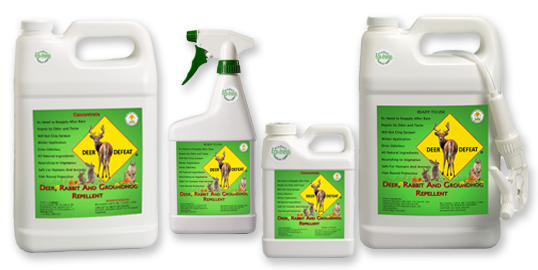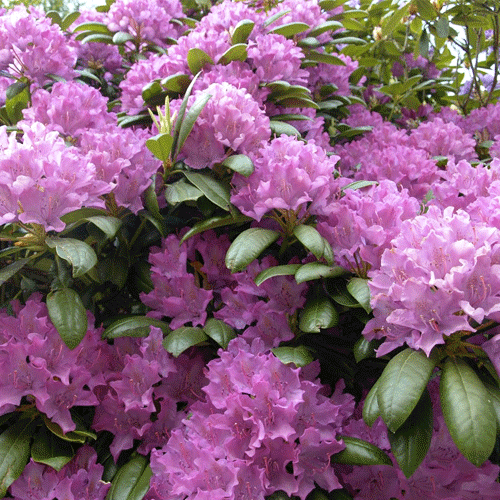What causes damage to trees in winter?
With cold Jack Frost having made his return, it’s important to protect your winter plants and trees. Although surprising, it’s not the freezing that does the most damage. The primary cause of winter damage to your trees and shrubs is through what’s called desiccation. In simpler terms, drying out.
When the temperature drops and the ground freezes, a plant’s root is unable to take up water from the soil. This causes it to quickly begin to use up all the water that the plant has stored in it’s leaves and stems.
As you can imagine, this is extremely damaging to plants, but especially hits evergreen trees and shrubs hard. This is because evergreens and shrubs do not protect themselves by dropping their leaves in winter.
Because of this, anti-desiccants have become popular to keep evergreens, shrubs and other plants healthy and protected during the cold winter months.
What is an Anti Desiccant
Anti-desiccants, also known as anti-transpirants, are protective sprays that provide a coating to reduce the amount of water that escapes from plants.
Most commonly, an anti-desiccant is a product used on evergreen trees and shrubs to help them retain water and hold in moisture throughout the cold winter months.
If you’ve experienced problems with your evergreens, shrubs or your garden during the cold months, you should give anti-desiccants a try.
Anti-desiccants are either made from chemical polymers, or natural ingredients, like pine oil.
How do Anti Desiccants Work
Anti-desiccants work by providing a thin, waxy film over the pores of the surface of the plant’s leaves or needles. They provide a seal that prevents all of the moisture inside of the plant from evaporating and, as a result, prevents the plant from drying out.
What Plants are in danger?
As we mentioned earlier, evergreens and shrubs and other plants that keep their needles or leaves are particularly susceptible to winter damage.
Broad-leaved evergreens are particularly susceptible to winter desiccation; that’s why you’ll see their leaves curl up and fold over on themselves as they try to protect their lower leaf surfaces and stave off moisture loss.
Also, if don’t get any precipitation for a long period of time over the winter, the cold can have an even greater drying out impact on plant health. When the ground is frozen AND plants don’t get any water, you’re likely to get winter dieback.
Anti-desiccants are particularly useful on plants that were planted within the last season.
Broad-leaved evergreens such as azalea, boxwood, holly, and rhododendron.
Conifers such as arborvitae, cedar, cypress, juniper, and pine.
Tender stems such as rose canes and hydrangea stems.
Be warned, read the label: Not all evergreens do well with anti-desiccants. Do not spray waxy-blue conifers such as blue spruce. This is because they already have a natural coating and you don’t want to interfere or damage it.
See below for other uses.
How to Use Anti-Desiccants: How and When to Apply
A quick tip: If you live in an area that has harsh winters, you should apply anti-desiccants twice. Once in November or December and once again in February. If you live in an area that typically has moderate or mild winters, a single application in December or January should get you through your coldest months.
Don’t Spray too Early
For conifers / evergreens, it’s a good idea to wait until at least December and after the evergreens have shifted into dormancy. If you apply the anti-desiccant too early, these plants won’t be completely dormant (which involves moving water down to the roots). This means that the spray will trap water in the leaves that will freeze and burst the plant cells later.
The Right Temp:
A good rule of thumb is to apply the spray when temperatures are between 40 and 50 degrees F
No Precipitation Coming:
You want to spray when a freeze or rain is not expected for at least 24 hours. Although a few days without rain is ideal.
Applying and Drying:
To apply an anti-desiccant, spray on both upper and lower leaf surfaces and follow the instructions. Be sure to spray the plant completely!
The Foliage needs to be dry when you are applying it, and the spray needs time to dry afterward.
Read the label!
As we mentioned above, some evergreens do not respond well to anti-desiccants and you can do considerable damage to then. Only spray anti-desiccants on the plants that are listed on the label.
Second Coats:
As winter progresses, a second application may be necessary in February. If there are no warm days early March works too.
Even with anti-desiccants on the foliage, be sure to keep your evergreen trees and shrubs well-watered through the winter months, especially if they’re newly planted.
Anti-desiccants are worn away and wash off on their own over several months. By springtime they should be completely gone. While all anti-desiccants are marketed as biodegradable, the ones with the most natural ingredients will be safest for you and your plants.
Deer Defeat Protects Your Plants for Winter
Did you know that Deer Defeat can protect your plants for the winter too? And with all natural ingredients, your plants and pets will thank you.
Not only will Deer Defeat help prevent deer and rabbits from turning your plants into a buffet, it will help to coat and nourish them throughout the winter.
Other Uses for Anti-Desiccants:
If you happen to have some extra spray left over after your application, there are few useful things that you can use it for
Anti-desiccants can also be used for:
Bulbs:
Apply an anti-desiccant to help tender bulbs before they are stored.
Transplanting
If you need to transplant a stressed shrub in midsummer, use an anti-desiccant to help hold in moisture until the plants put out new roots.
Pumpkins:
Apply anti-desiccant to your carved pumpkin and help to make it last longer throughout your Halloween.
Christmas Trees:
Same concept as pumpkins. Add some Anti-desiccant to your cut Christmas tree and you’ll really help it from drying out as fast as it normally would.
Wreathes, Garland and Other Decor:
Add some anti-desiccant to a bathtub full of water and dunk wreathes and garland. You can also spray until they’re soaked, and then shake off any excess moisture. This will keep them fresh and beautiful for even longer.



